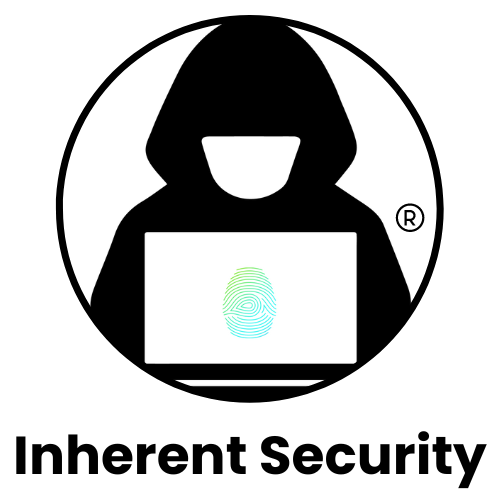Why Your Healthcare Data Is More Valuable Than Your Credit Card—And Hackers Know It!
Introduction
Health tech companies are on the frontlines of digital transformation, leveraging technology to enhance patient care and operational efficiency.
However, rapid innovation comes with heightened cybersecurity risks.
Healthcare data is one of the most valuable assets on the black market, often fetching a higher price than credit card information.
According to IBM’s 2024 Cost of a Data Breach Report, the average cost of a healthcare breach has reached a record $10.93 million per incident, making it the most expensive industry for data breaches for the 13th consecutive year.
For technology leaders in health tech, understanding why hackers target this data and how to protect it is essential.
The Value of Healthcare Data on the Dark Web
Unlike credit card numbers, which can be quickly canceled, healthcare data contains immutable patient information such as Social Security numbers, medical histories, and insurance details.
Cybercriminals use this data for various fraudulent activities, including identity theft, insurance fraud, and even blackmail.
A single medical record can sell for as much as $250 on the dark web, compared to $5 for a stolen credit card number. How valuable is your data?
The lucrative nature of these records makes health tech companies a prime target for cyberattacks.
Why Health Tech Is a Prime Target for Cyberattacks
Health tech companies manage vast amounts of sensitive patient data, making them attractive to cybercriminals.
Several factors contribute to the industry's vulnerability:
A High Volume of Sensitive Data: Protected Health Information (PHI) is incredibly detailed and valuable, making digital health platforms a goldmine for hackers.
Integration with Multiple Systems: Health tech solutions often integrate with hospitals, insurers, and third-party vendors, expanding the attack surface.
Cloud-Based and IoT Vulnerabilities: The rapid adoption of cloud storage, telehealth platforms, and IoT medical devices increases security risks.
Ransomware and Operational Disruptions: Unlike other industries, health tech companies provide critical services that cannot afford downtime, making them more likely to pay ransoms when their systems are attacked.
In 2024, nearly 89 million individuals were affected by healthcare data breaches, with ransomware attacks accounting for over 60% of major incidents (U.S. Department of Health and Human Services).
As cyber threats evolve, health tech leaders must adopt proactive security measures to safeguard patient data and maintain compliance with regulatory standards.
Common Attack Methods Used Against Health Tech Companies
Cybercriminals use various attack vectors to compromise health tech organizations.
Some of the most common methods include:
Ransomware Attacks: Hackers encrypt critical systems and demand payment in exchange for restoring access.
Phishing Schemes: Attackers trick employees into revealing credentials or installing malware through deceptive emails.
Insider Threats and Third-Party Vulnerabilities: Employees or vendors with access to sensitive systems can unintentionally or maliciously expose data.
API Security Risks: Many health tech platforms rely on APIs to integrate data across systems. If not secured properly, APIs can be exploited by attackers to gain unauthorized access to patient records.
The Financial & Reputational Impact of Health Tech Data Breaches
The consequences of a data breach extend beyond financial losses. Some key impacts include:
Financial Costs: Health tech companies face regulatory fines, legal fees, and compensation payouts. The cumulative cost of healthcare cyberattacks is expected to surpass $10 billion annually by 2025 (Cybersecurity Ventures).
Regulatory and Compliance Consequences: Non-compliance with HIPAA, SOC 2, and other frameworks can result in hefty fines. The OCR issued over $28 million in HIPAA violation fines in 2023 alone.
Reputational Damage: Clients lose trust in companies that fail to protect their data. A 2024 survey found that 73% of patients and providers would switch platforms if their healthcare data were compromised (Ponemon Institute).
Compliance Challenges: Navigating HIPAA, SOC 2, and NIST Frameworks
Regulatory compliance plays a crucial role in securing healthcare data, but many organizations struggle with meeting these requirements:
HIPAA Compliance: Ensuring HIPAA adherence requires stringent access controls, encryption, and risk assessments.
SOC 2 Certification: Health tech vendors and should aim for SOC 2 security standards, but lengthy audit times can delay the customer acquisition process.
NIST Cybersecurity Framework: Adopting NIST guidelines enhances resilience, yet many organizations lack the resources to implement the framework.
Strategies for Strengthening Health Tech Cybersecurity
To mitigate cybersecurity threats, health tech companies should focus on:
Implementing Zero-Trust Security Models: Ensure strict verification for all users and devices before granting access.
Securing Cloud-Based Health Tech Platforms: Encrypt sensitive data, monitor security configurations in the cloud, and use multi-factor authentication.
Enhancing Endpoint Security: Protect all devices connected to the network, including mobile, and IoT devices.
Leveraging AI for Threat Detection: Consider machine learning to detect and respond to threats in real time.
Future Trends: Health Tech Cybersecurity
Looking ahead, health tech cybersecurity will continue to evolve.
Key trends include:
Increased AI-Powered Attacks: Hackers will use AI to automate phishing campaigns and exploit vulnerabilities faster.
Stronger Regulatory Measures: Governments will impose stricter data protection laws to combat rising threats.
Greater Collaboration Among Health Tech Providers: Information sharing will become essential for early threat detection and response.
Conclusion
Health tech companies must stay vigilant against cyber threats.
By adopting proactive cybersecurity strategies, investing in resources, and ensuring compliance you can protect sensitive patient data and maintain trust.
Cybersecurity is an ongoing battle, but with the right defenses in place, you can stay one step ahead of hackers.
If you're looking for guidance on strengthening your health tech cybersecurity strategy, consider partnering with experts with and understanding of what it takes.
Investing in the right tools and best practices today can save your company from costly breaches tomorrow.
